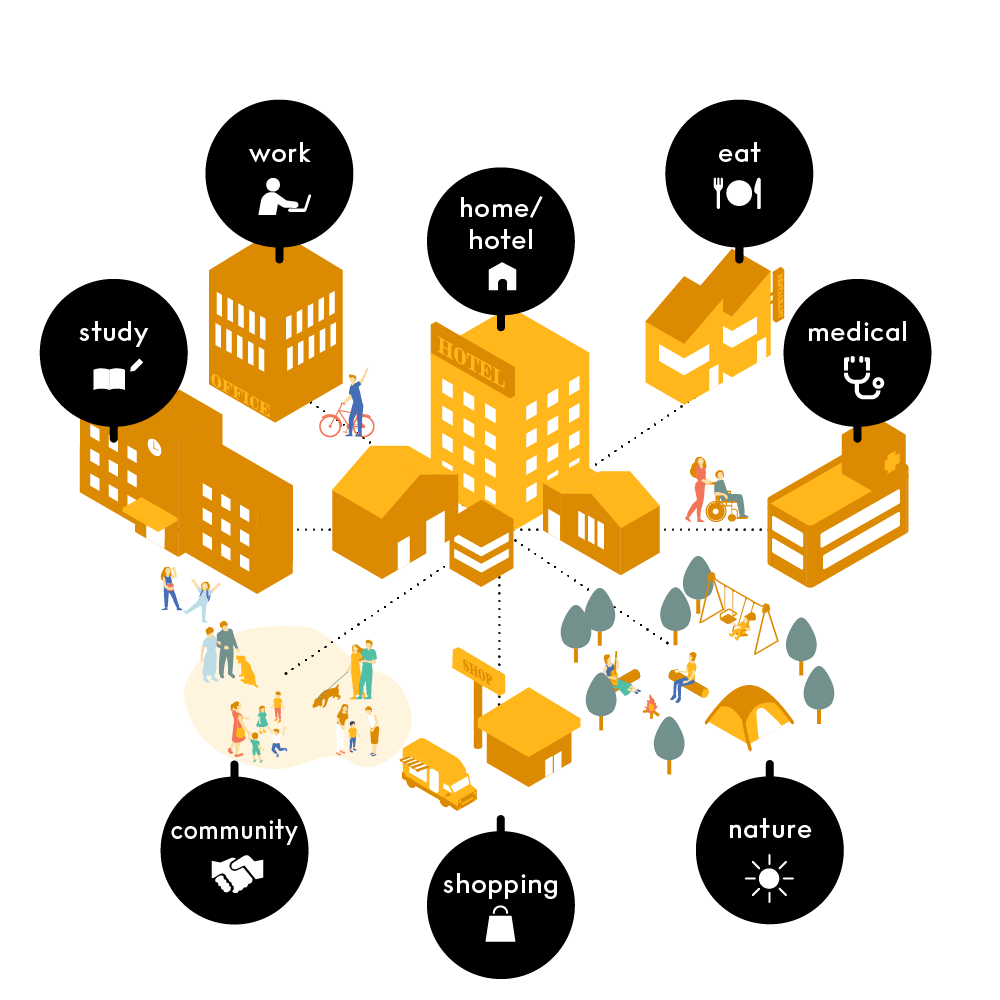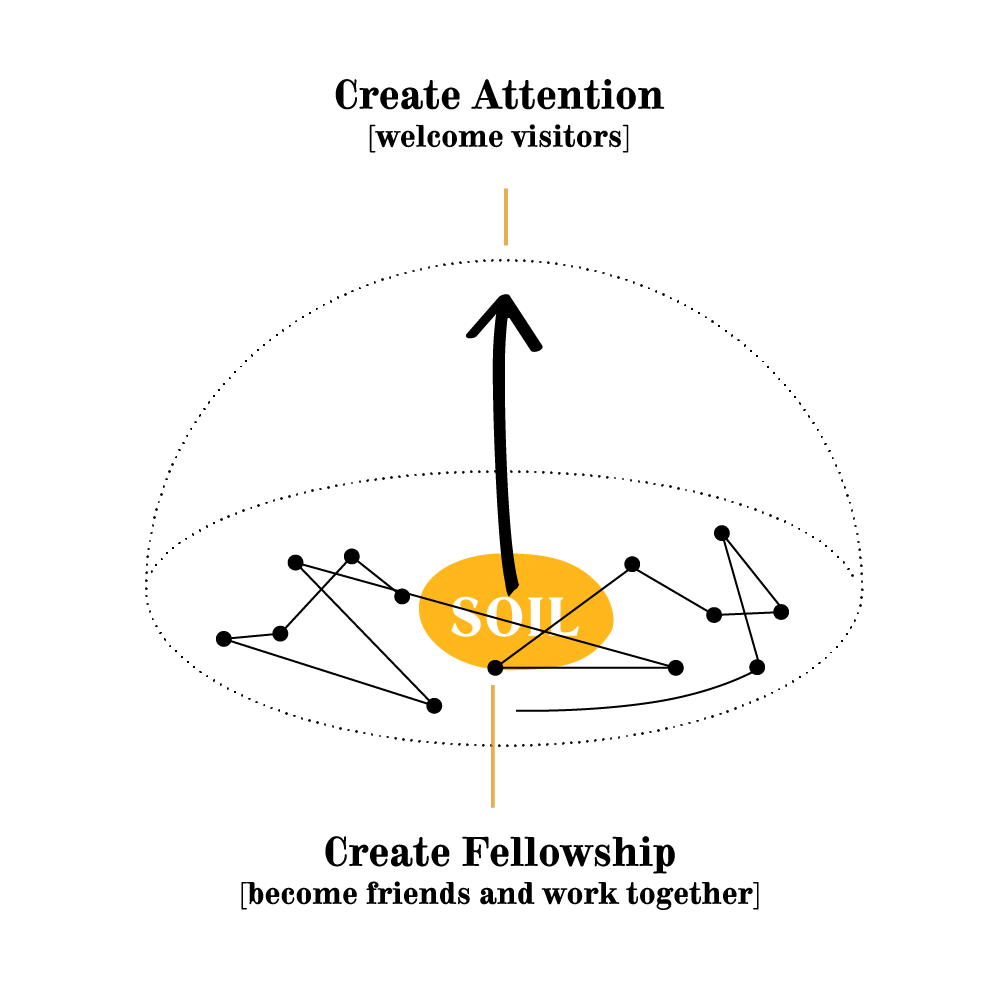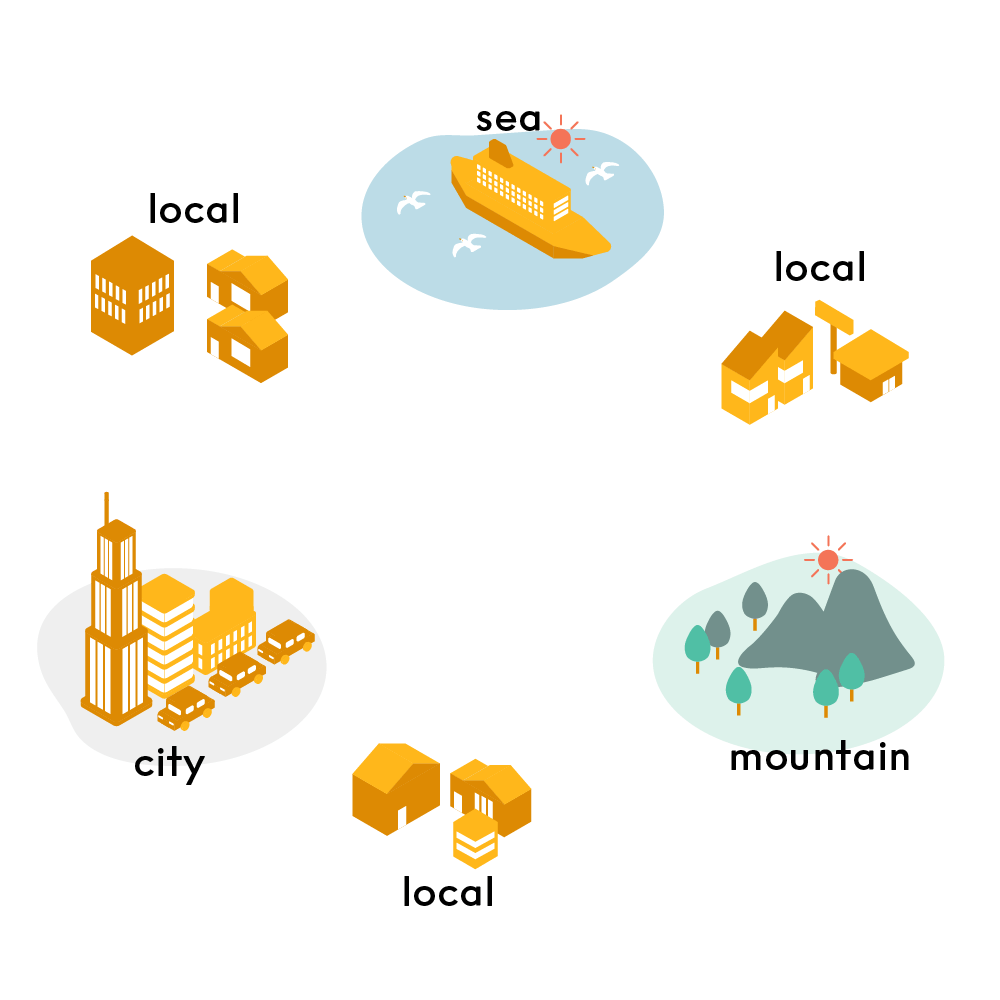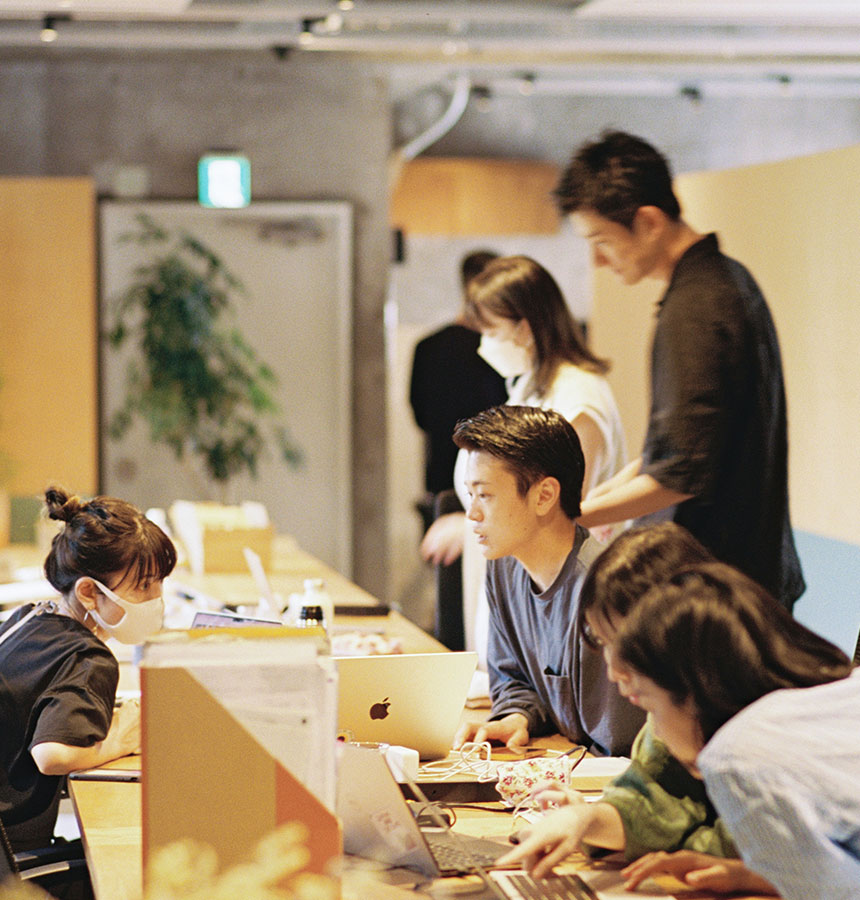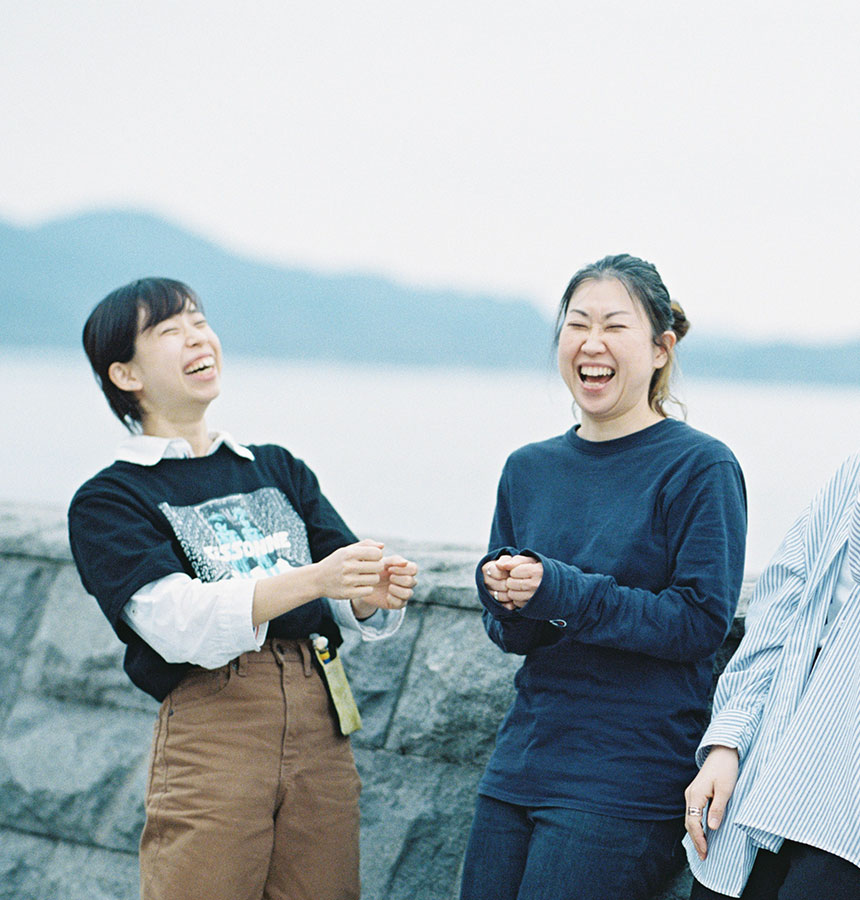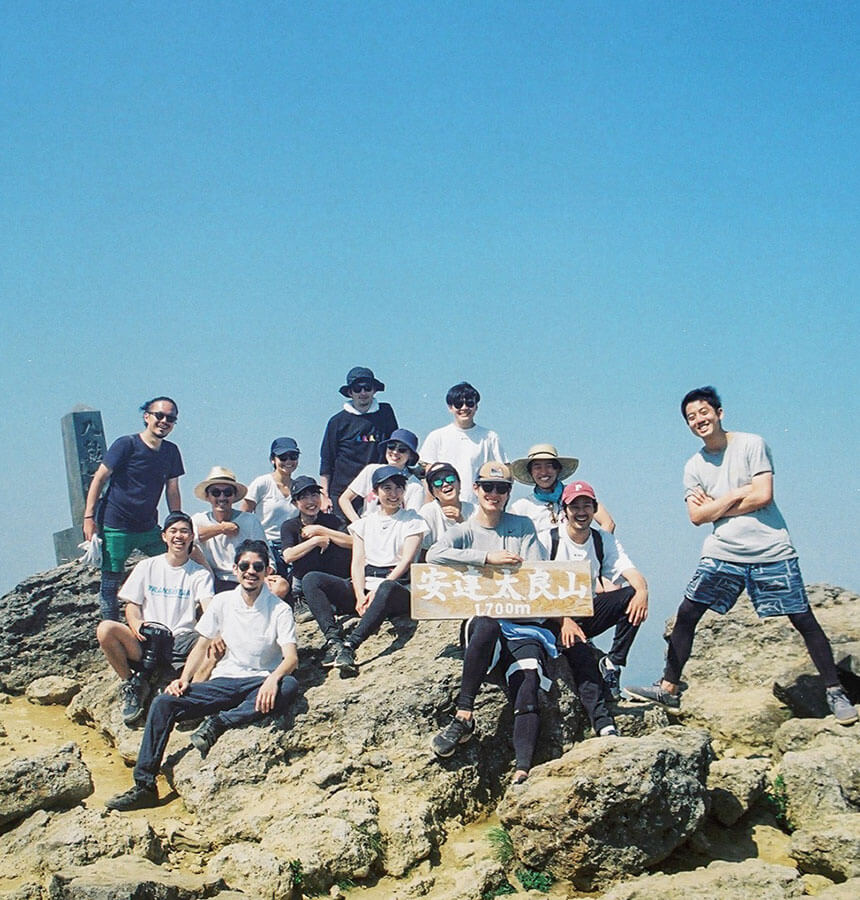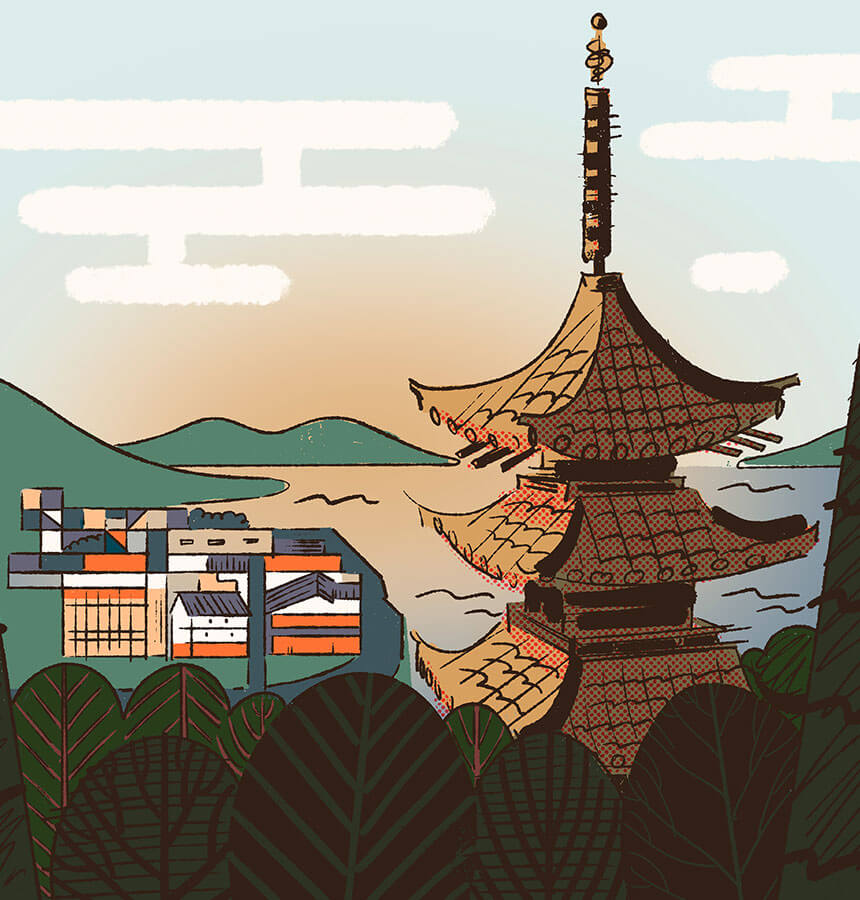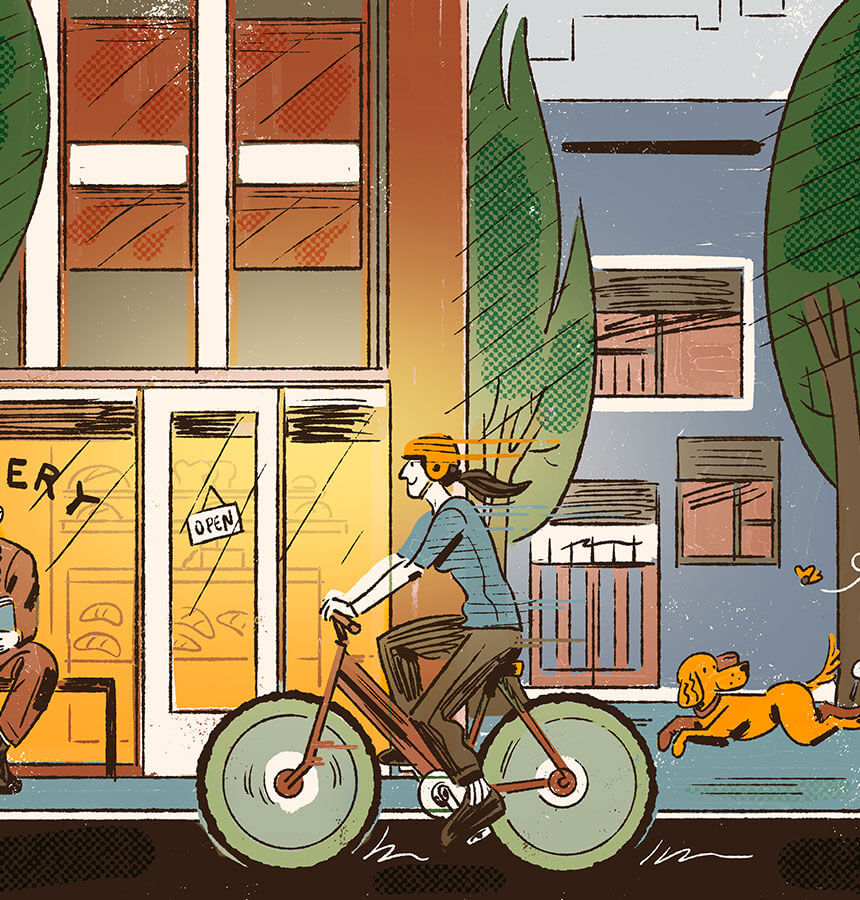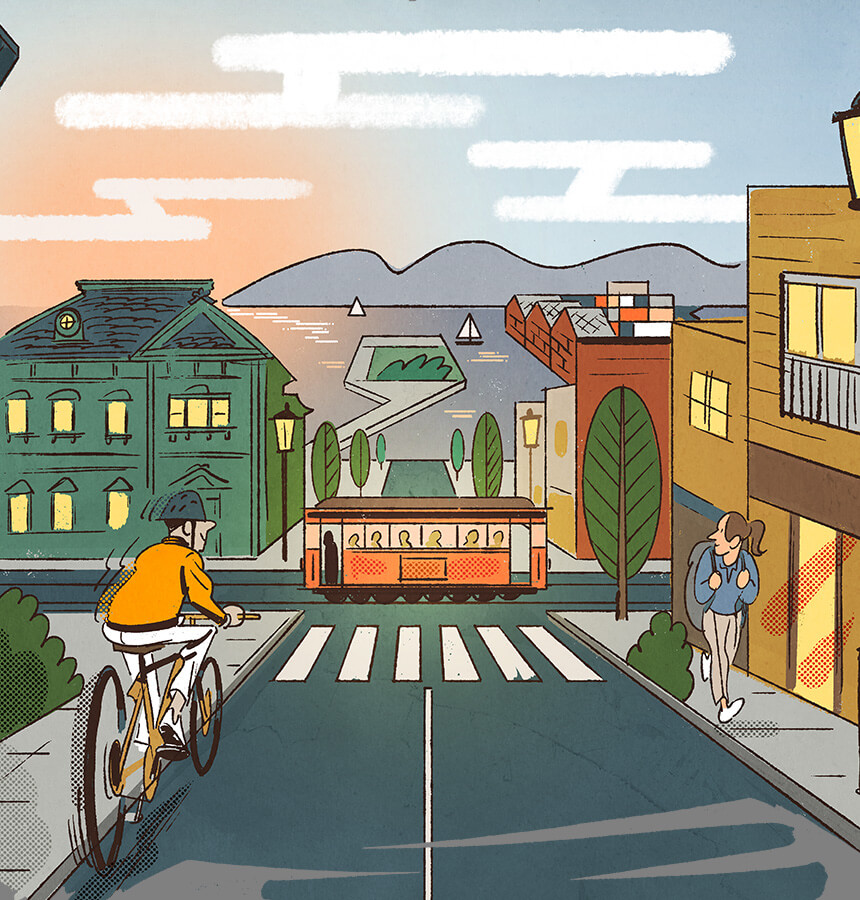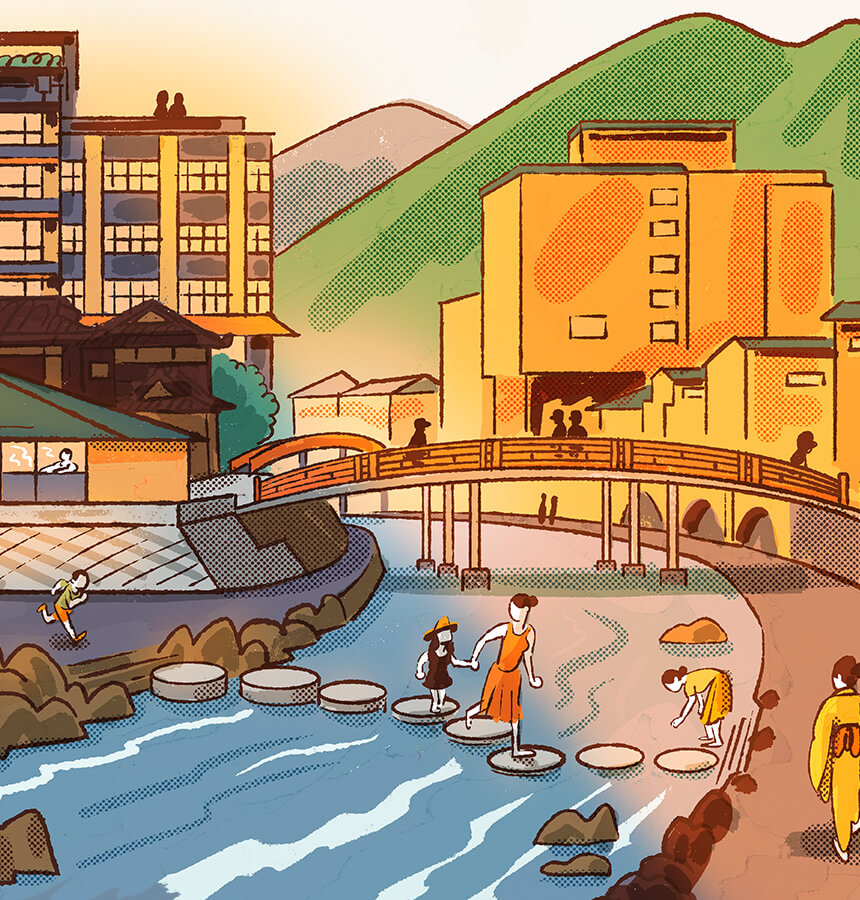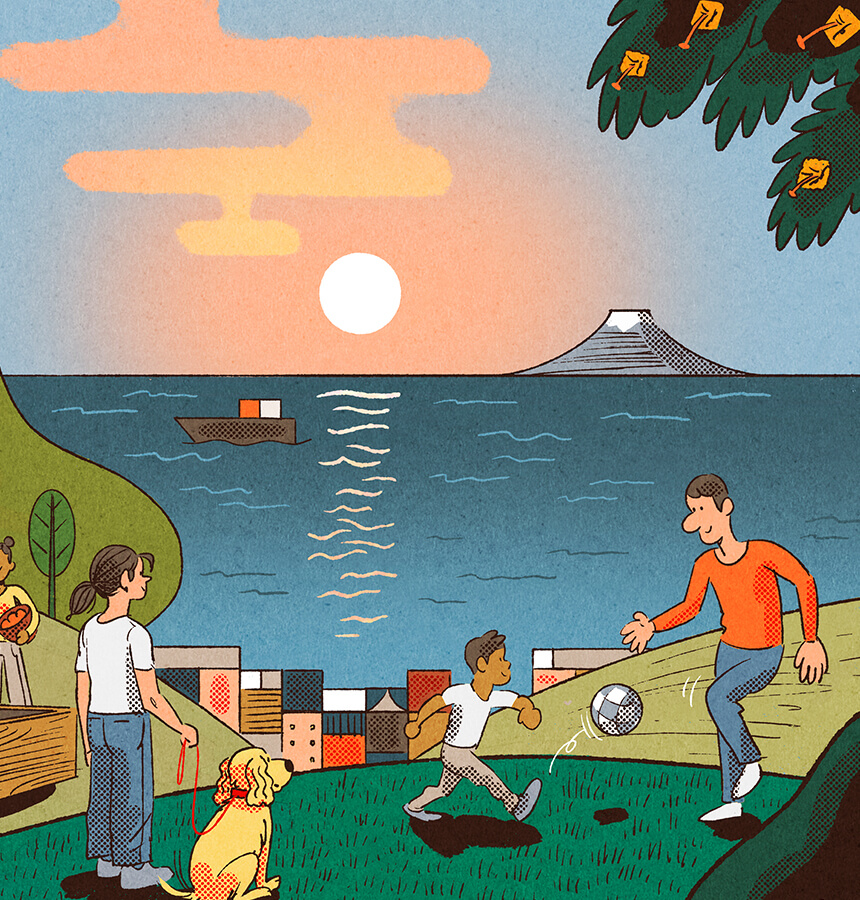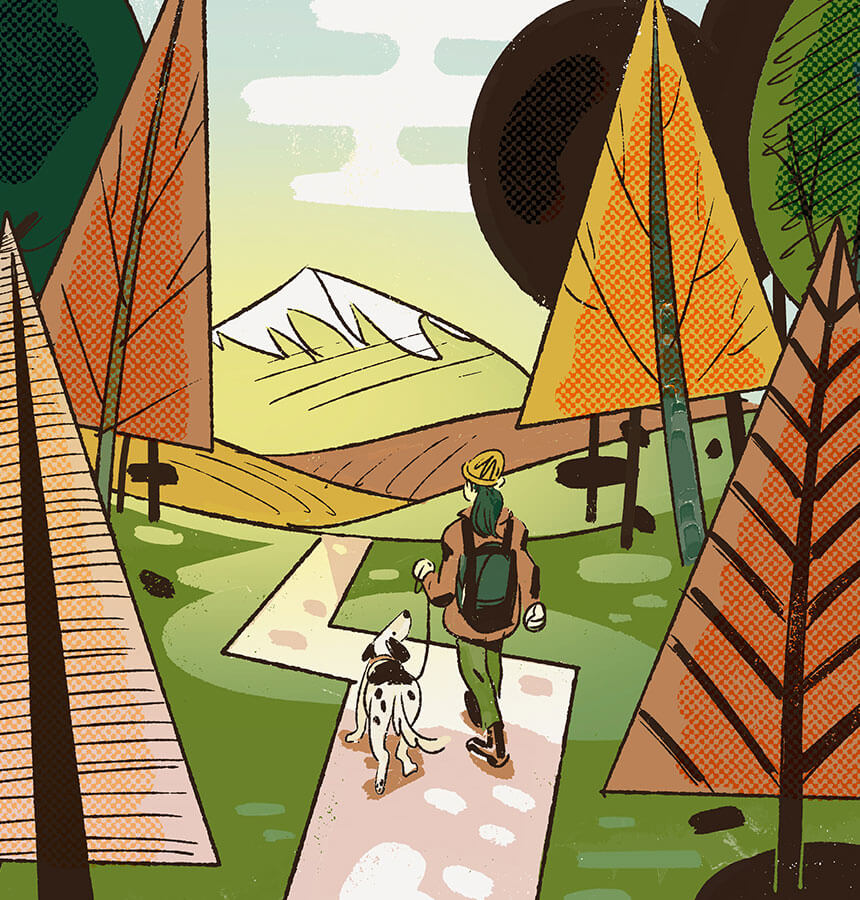About

Create wind,
Cultivate soil,
Build connections to a future
where land and culture thrive.
Soft
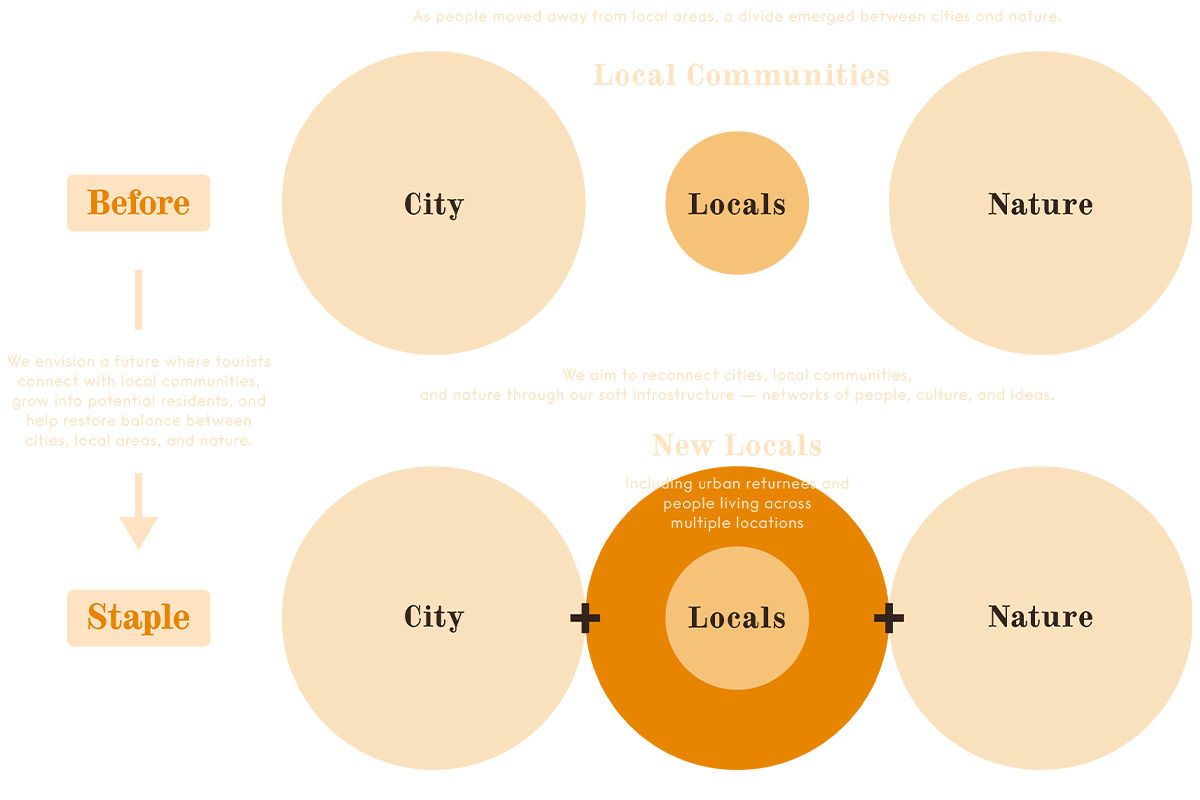
Hard
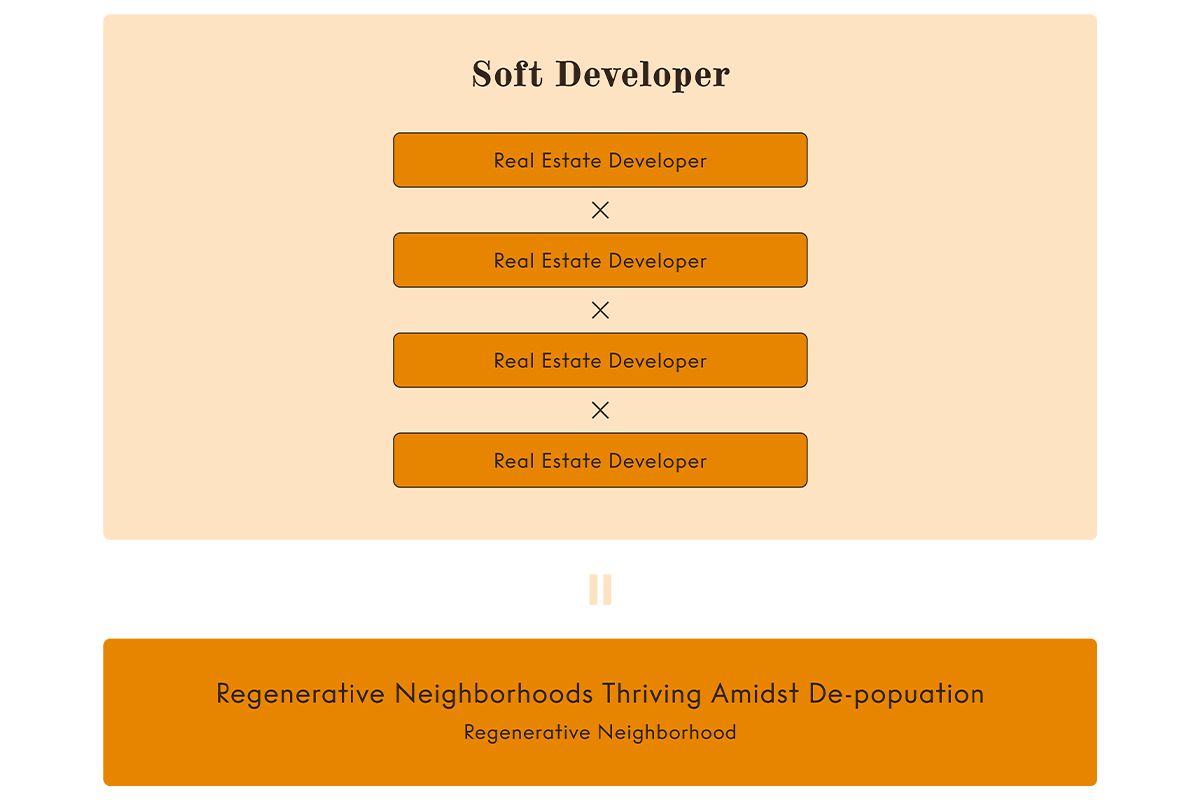
Soft

Staple is a developer that deciphers the climate of our enchanted neighborhoods and nurtures the soft infrastructure to connect its value to the future. We envision a future where the city, the local, and nature are connected beyond disconnection and share in each other's richness. To this end, we provide “soft infrastructure” that rediscovers local values and creates new values through people's interaction.
A neighborhood is a town where you can feel that you are part of it in a hindu way. The chairman of the shopping district and the young people who have moved to the area will be at the same table. It is a place where the people who live in the neighborhood diversify over time, and where chance encounters filled with potential continue to be created. People think of others, and they think of the natural environment that is close to their lives.
We believe that by developing a series of places in densely populated neighborhoods with a flexible attitude that accepts diverse ideas and cultures, we will be able to connect these gentle relationships, and that a wider and more diverse range of people will be involved in the community.
Context

Our Mission
As our relationships with our neighbors become weaker, as our population shrinks and as disasters increase, I often wonder what we can do to help. We are always wondering what we can do in the face of a shrinking population and increasing disasters. Staple's involvement in this project will help to create a new future for the community. Staple's involvement will increase the number of such communities. I am convinced once again that this is what we can do.
Since the Second Industrial Revolution, the pursuit of economic growth has led people to concentrate in cities, and we have entered an era of homogenization, where the same goods can be found anywhere you go. As a result, local cultures and natural resources are being lost (left side of the figure).
Staple aims to reverse this trend and create a “local economy” where natural capital is sustained, culture is strengthened, and the economy is completed locally. We want to foster a new type of economy where goods circulate within the region and people and ideas transcend regional boundaries.
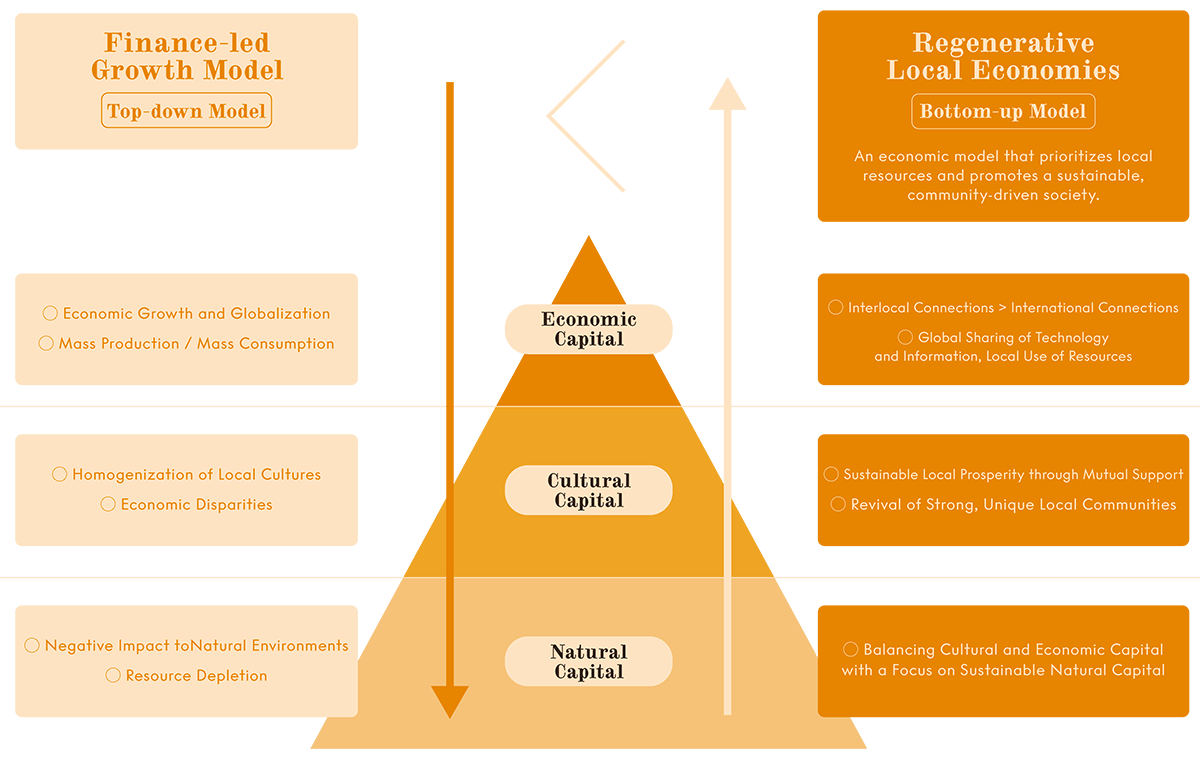
‘New infrastructure’ for ‘New locals’
Staple does not simply divide people involved in a town into locals and tourists, but defines “locals” as ‘locals’ as well as “new locals,” “repeaters and fans,” and “tourists and visitors” as potential locals. We believe that a major step toward regional revitalization is when people who visit a city as tourists or travelers are attracted to its atmosphere and become “new locals,” and when these four layers of locals eventually become friends through their "hometowns.
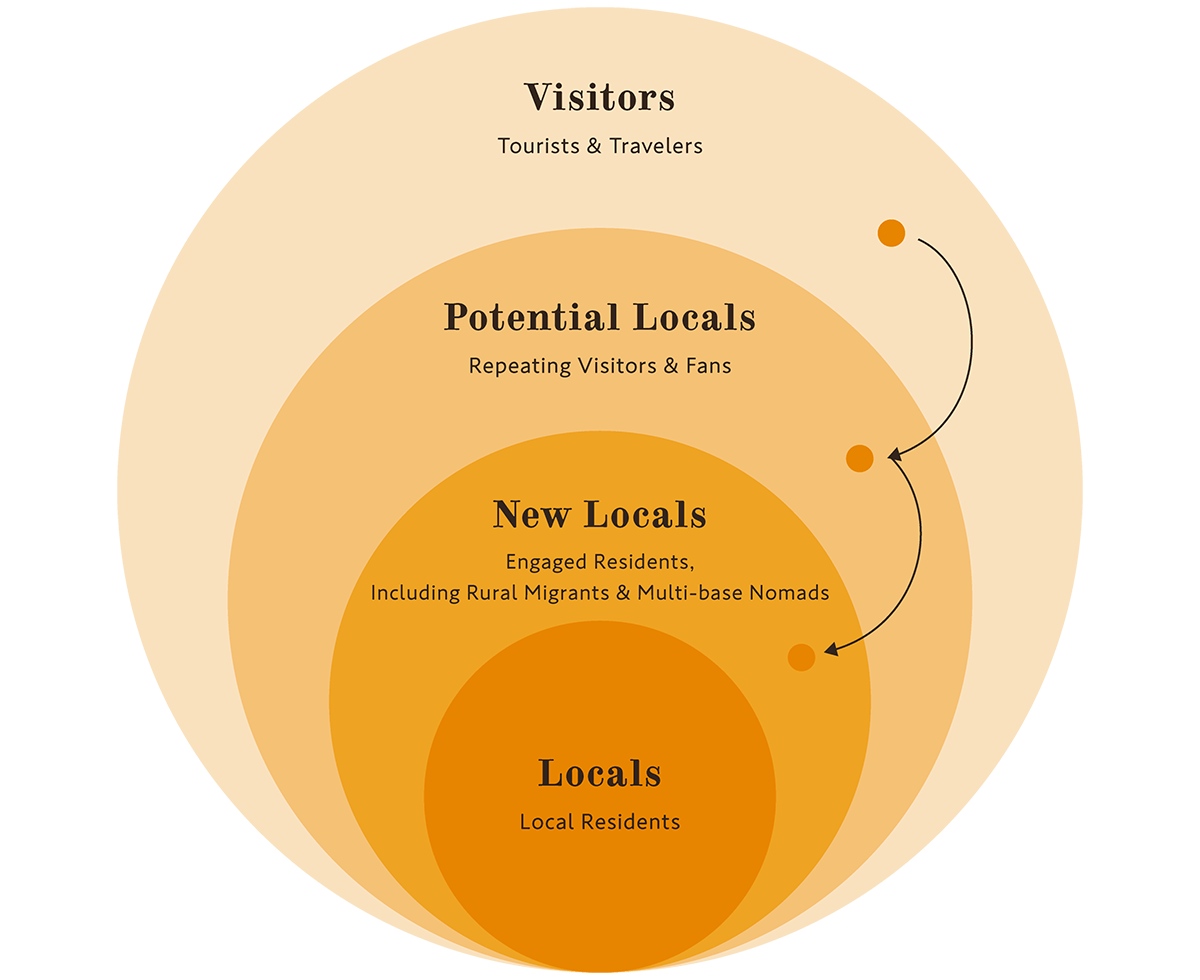
Create a new infrastructure that attracts new locals.
Make the neighborhood more livable for all three types of locals by developing dynamic new infrastructure.
Staple recognizes that the foundation for quality of life in any microcosm is the existence of soft but essential infrastructure such as schools and workspaces, the local bathhouse, coffee shops, and even simple vegetable stands. Developing this soft infrastructure allows people to live in a way whereby the local history, culture, land, and climate is reflected in all aspects of daily life. Methods of creating, producing, and consuming goods–and even energy–can all be clearly felt as tied specifically to that place.
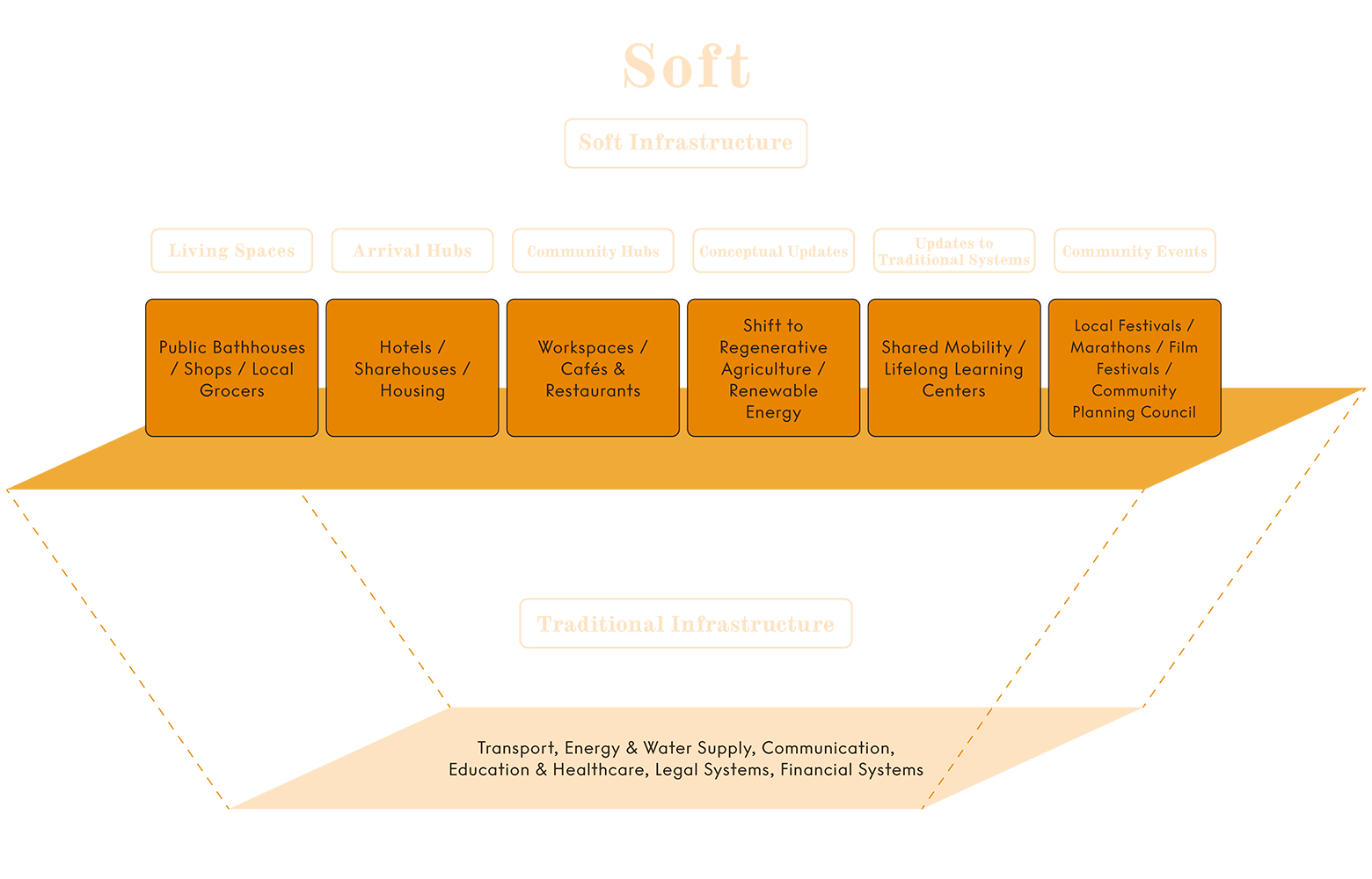

Scroll
今見える3つのアプローチ
Change is constant.Placemaking should leave room for organic change, making things accessible and participatory. Take time to grow close to the land and its community, and envision its future as a team.
-

A Walkable Neighborhood
-
Walking is the smallest unit of action that people engage in on a daily basis, and it is also one of the most crucial actions. Walking through the neighborhood allows for chance encounters with acquaintances and friends, engaging in impromptu conversations. It provides opportunities to receive recommendations from the local grocer about today's specials or witness dogs and children playing in the park. Physical proximity enhances interaction and solidarity, fostering a warm, friendly, and safe sense of community. Even visitors from outside the neighborhood are more likely to experience serendipitous encounters with local residents and events.
When people can walk or bike in their daily lives, it contributes to an environmentally friendly lifestyle. Creating and nurturing a community that develops within such a range, where rich lives can flourish, holds significant meaning.

-

Creating Height and Interaction - Cultivating the Soil of Diversity
-
Creating a destination-worthy hotel or restaurant has the power to raise the value and recognition of the broader area’s identity. The addition of a facility that welcomes everyone and serves as ‘the living room of the neighborhood,’ heightens people’s ability to live and work together. This space not only resembles a living room; it also becomes a hub for the 3 types of locals to come together, where camaraderie and a sense of belonging transpires. The depth and breadth of these relationships expands the neighborhood’s capacity for meaningful growth.

-

Interlocal - Connecting Urban, Rural, and Nature
-
By maintaining a lifestyle that involves having a base in the city or a local area while regularly visiting another local space or immersing oneself in nature such as the sea, mountains, or rivers—a lifestyle with both 'A-side and B-side'—individual perspectives and networks expand. This not only enriches personal lives but also has the effect of individuals acting as catalysts, circulating new ideas and sensibilities within each local community.
Staple aims to create and operate a community called "Soil work," believing that by doing so, they can generate such effects from one local area to another, fostering a flow of new ideas and sensibilities facilitated by individuals connecting urban, rural, and natural spaces.
-

Profile
| Company Name: | Staple Inc. |
|---|---|
| Board Directors: | CEO: Yuta Oka Ryota Kobayashi Yusuke Umeda |
| Advisory Board | Takashi Mitachi Shunichi Shibue Yukako Ishikawa |
| Number of Employees: | 73 |
| Founded: | November 5th, 2018 |
| Capital Stock: | 94.73 million yen |





